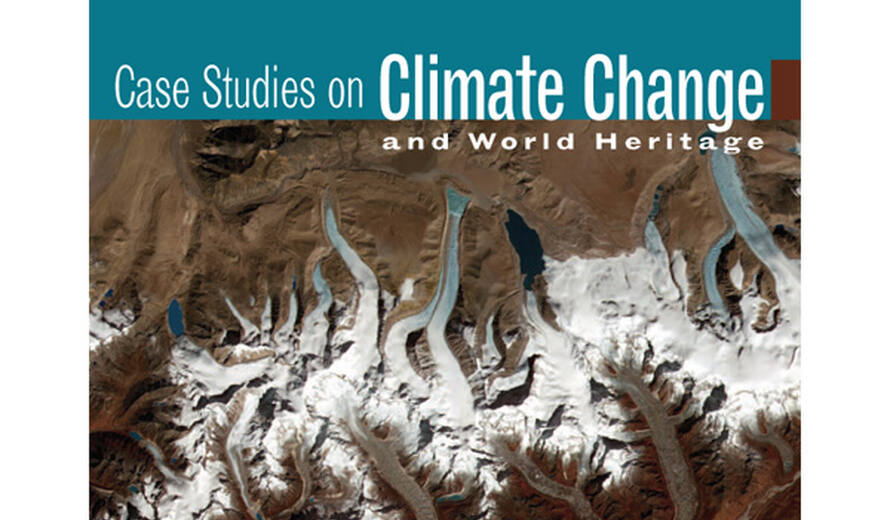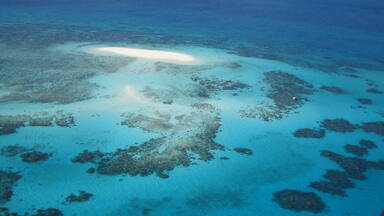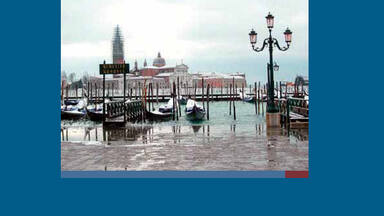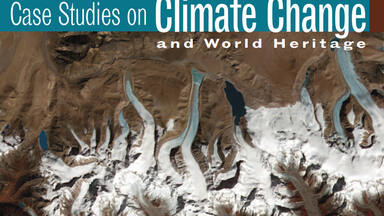Climate change threatens UNESCO World Heritage sites
The threats posed by climate change to natural and cultural sites on UNESCO's World Heritage List are outlined in a new UNESCO publication, "Case Studies on Climate Change and World Heritage"*. The report features 26 examples - including the Tower of London, Kilimanjaro National Park and the Great Barrier Reef - case studies that are representative of the dangers faced by the 830 sites inscribed on the World Heritage List.
"The international community now widely agrees that climate change will constitute one of the major challenges of the 21st century," says the Director-General of UNESCO, Koïchiro Matsuura, in his Foreword to the publication, calling for "an integrated approach to issues of environmental preservation and sustainable development."
The publication, intended to raise awareness and mobilize support for heritage preservation, is divided into five chapters that deal with glaciers, marine biodiversity, terrestrial biodiversity, archaeological sites, and historic cities and settlements:
The melting of glaciers around the world is affecting the appearance of sites inscribed for their outstanding beauty and destroying the habitat of rare wildlife species such as the snow leopard, in the Sagarmatha National Park, Nepal. These changes could also have disastrous effects on human lives with flooding resulting from glacial lake outbursts threatening human settlements. The establishment of monitoring and early warning systems and the artificial draining of glacial lakes are recommended to help avoid disasters.
The report also examines the effects of climate change on the marine World Heritage sites. Seventy percent of the world's deep sea corals are expected to be affected by changing conditions related to rising temperatures and increased oceans acidification by the year 2100. The Great Barrier Reef, Australia, is expected to be subjected to increasingly frequent bleaching events, cases in which corals turn white and may die due to rising sea temperatures. Fifty-eight percent of the world's coral reefs - home to hundreds of thousands of fish species - are considered to be at risk. Reducing the effect of other stresses on the coral reefs from pollution, development and mining for example, could greatly improve their resilience to climate change, argues the report.
Biodiversity on land is also threatened by climate change, says the report, which features a detailed case study of the Heritage Site of Cape Floral Region Protected Areas, South Africa, where biodiversity is threatened by shrinking bioclimatic habitats - due to warming and changes in precipitation. On the global scale, climate change is expected to lead to changes in the distribution of species, including "invasive species", pathogens and parasites and on the timing of biological events, such as flowering, and the relationships between predator and prey, parasite and host, plant and pollinator, etc. The report recommends several measures to deal with this problem, including the creation of protected areas and relocating particularly endangered species.
Climate change is also expected to damage archaeological World Heritage sites, according to the report which examines prospects for Chan Chan Archaeological Zone, Peru, alongside other World Heritage properties in Canada and the Russian Federation. Changes in precipitation and drought cycles, in humidity, water-table levels and ensuing soil chemistry will, inevitably, impact the conservation of archaeological remains. Likewise, temperature rises, especially the melting of permafrost in the Arctic region and rising sea levels are also expected to take their toll on this heritage. The report notably analyses how precipitations related to El Niño is undermining the fragile earthen fabric of Chan Chan, the remains of the capital of the ancient Chimu Kingdom, one of the most important pre-Hispanic earthen architecture cities in the Americas.
Rising sea levels and flooding due to climate change could have a devastating effect on both the buildings and social fabric of historic cities and settlements, according to the report, which focuses on the cases of the World Heritage sites of the City of London alongside several other sites in Europe, Africa (Timbuktu, Mali), and the Middle East (Ouadi Qadisha and the Forest of the Cedars of god, Lebanon). The increase in soil moisture after flooding events can lead to a rise in saline crystallization on built surfaces, which is particularly damaging to decorated surfaces. Increased humidity can also lead to ground heave and subsidence. Dealing with these and other threats requires taking into account the complex interactions among natural, cultural and social aspects of conservation.
The publication of this report follows on the 2005 decision by the World Heritage Committee's decision, to start studying the impact of climate change on World Heritage sites. In March 2006, 50 experts on the subject met at UNESCO and in July 2006, the Organization presented the World Heritage Committee with a report on "Predicting and Managing the Effects of Climate Change on World Heritage," and a "Strategy to Assist States Parties to Implement Appropriate Management Responses."
****
* The publication: https://whc.unesco.org/documents/publi_climatechange.pdf
For more on UNESCO and climate change: https://whc.unesco.org/en/climatechange




